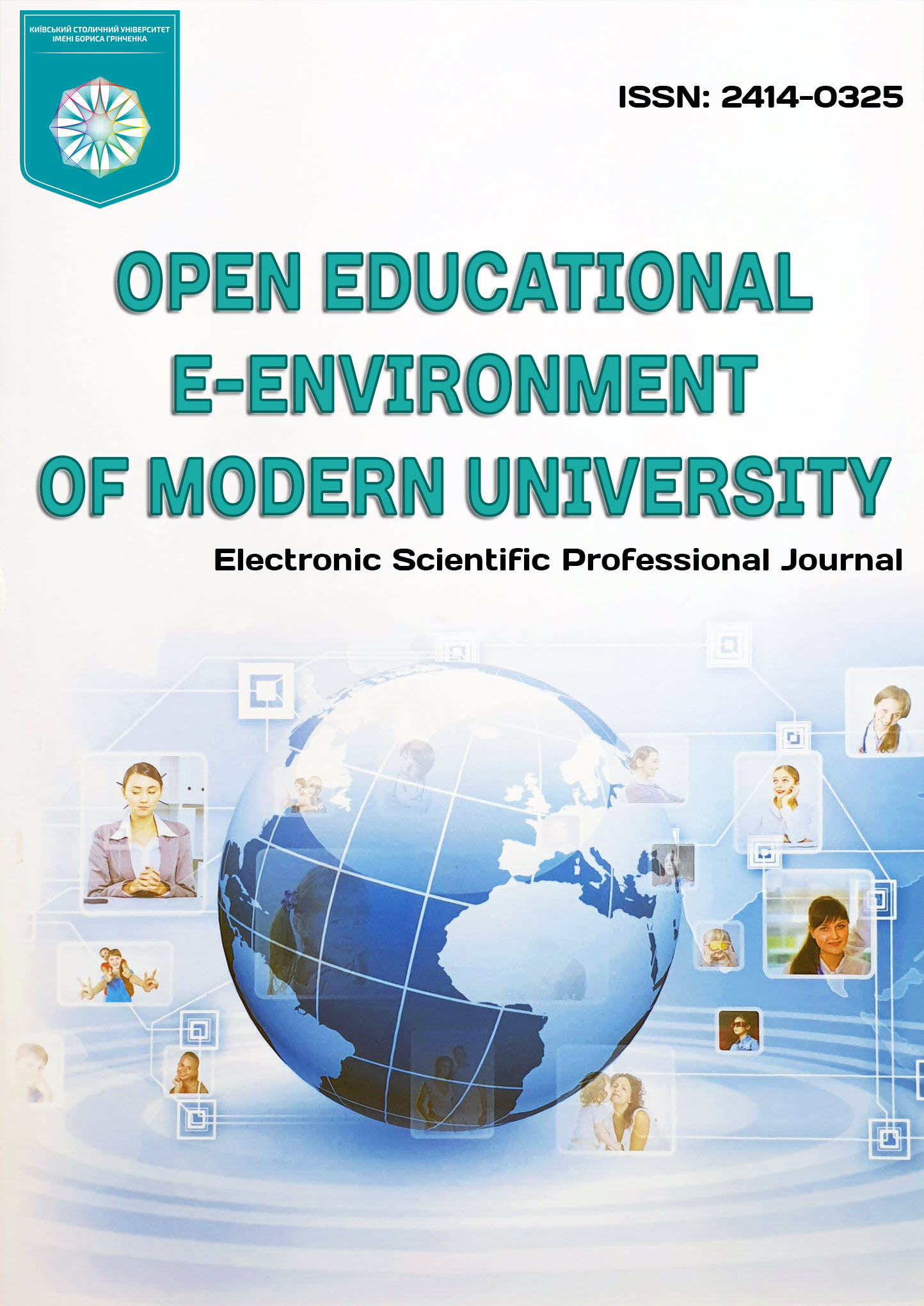COMPARATIVE ANALYSIS OF THE PERFORMANCE OF NODE AND BUN PLATFORMS IN EDUCATIONAL WEB APPLICATIONS
DOI:
https://doi.org/10.28925/2414-0325.2025.1810Keywords:
node.js, bun, web application, educational technology, load testing, digital transformationAbstract
This article presents a comparative analysis of the performance of Node.js and Bun platforms in the context of developing educational web applications. Modern educational information systems are increasingly implemented as web applications, requiring high performance, scalability, and efficient resource utilization. With the emergence of Bun, a new platform positioned as a faster alternative to Node.js, there is a need for scientific investigation of its capabilities, advantages, and limitations in practical application. This study describes an experimental evaluation of a web application’s performance on both platforms and discusses the feasibility of migrating from Node.js to Bun. A roadmap for migrating a web application from Node.js to Bun is also developed. The research involved a series of load tests conducted using the Bombardier utility. Experiments were performed in the Google Cloud Platform (GCP) cloud environment using a standardized test configuration, enabling an objective performance assessment of each platform. The test results demonstrated a significant advantage of Bun over Node.js in terms of the average number of HTTP requests processed per second (RPS). Bun showed a 2.14-fold performance increase, processing an average of 8038 requests per second compared to 3753 requests for Node.js. However, certain compatibility issues between Bun and some modules were identified, necessitating modifications to the web application’s code. This suggests that while Bun holds considerable potential for web development, it is still under active development, and the migration process might require additional effort to adapt the application code. The obtained results are valuable for developers of educational web applications, as the choice of runtime environment directly impacts application performance, access speed to materials, and system scalability. Promising areas for future research include analyzing Bun’s stability in long-term use, its compatibility with existing modules, and optimization under real-world high-load conditions.
Downloads
References
Resolution of the Cabinet of Ministers of Ukraine (2024). On Approval of the List of Priority Thematic Directions for Scientific Research and Scientific-Technical Developments until December 31 of the year following the cessation or cancellation of martial law in Ukraine #476. https://zakon.rada.gov.ua/laws/show/476-2024-п (in Ukrainian).
Order of the Cabinet of Ministers of Ukraine (2024). On Approval of the Strategy for Digital Development of Innovation Activities in Ukraine for the Period until 2030 and Adoption of the Operational Action Plan for Its Implementation in 2025-2027, #1351-r. https://zakon.rada.gov.ua/laws/show/1351-2024-р (in Ukrainian).
Lynnyk, Y., Krestyanpol, L., & Rozvod, E. (2024). Development of a natural language chatbot interface for website users. Eastern-European Journal of Enterprise Technologies, 1(2 (127)), 35-44. https://doi.org/10.15587/1729-4061.2024.299200
Zhou, B., & Mui, L. G. (2024). Utilising chatbots in clinical nursing education: Application and obstacles. Journal of Clinical Nursing. https://doi.org/10.1111/jocn.17089
Sravani, C., Kumar, P., Priya, S., Yadav, S. K., Rao, M. J., & Prasan, U. D. (2024). Constructing a Study Buddy Using MERN (MongoDB, Express.js, React, Node.js) Stack Technologies. Engineering Proceedings, 66(1), 27. https://doi.org/10.3390/engproc2024066027
Jaybhaye, S. M., Natekar, D., Nayakodi, P., Raut, N., & Jahagirdar, O. (2023). TeachAR-Augmented reality-based Education application. Journal of Physics: Conference Series, 2601(1), 012012. https://doi.org/10.1088/1742-6596/2601/1/012012
Para, S., Shahrokhi, H., Maserat, E., & Mohammadzadeh, Z. (2024). Design and evaluation of child abuse web-based application for parent education & strengthen. BMC Public Health, 24(1). https://doi.org/10.1186/s12889-024-18248-9
Tkachenko, O., & Bondar, V. (2023). Some Aspects of Using Node.js and MongoDB in Creating Educational Web Applications. Digital Platform: Information Technologies in Sociocultural Sphere, 6(1), 76-89. https://doi.org/10.31866/2617-796x.6.1.2023.283958 (in Ukrainian).
Turnip, A., Pebriansyah, F. R., Simarmata, T., Sihombing, P., & Joelianto, E. (2023). Design of smart farming communication and web interface using MQTT and Node.js. Open Agriculture, 8(1). https://doi.org/10.1515/opag-2022-0159
Odeniran, Q., Wimmer, H., & Rebman, C. (2023). Node.js or PHP? Determining the better website server backend scripting language. Issues in Information Systems. https://doi.org/10.48009/1_iis_2023_128
Kyrychenko, I. , Nazarenko, A., & Popov, R. (2020). Optimization and scaling Node.js apps. Bionics of Intelligence, 2(95), 28-31. https://doi.org/10.30837/bi.2020.2(95).04 (in Ukrainian).
Revenchuk, I., & Steshko, V. (2022). Architectural solutions and optimization methods to improve the performance of node.js and vue.js applications. Bionics of Intelligence, 1(98), 64-69. https://doi.org/10.30837/bi.2022.1(98).08 (in Ukrainian).
Bun. (n.d.). Bun – A fast all-in-one JavaScript runtime. https://bun.sh/
Published
How to Cite
Issue
Section
License
Copyright (c) 2025 Ostretsova T., Pereiaslavska S., Ostretsov D.

This work is licensed under a Creative Commons Attribution-NonCommercial-ShareAlike 4.0 International License.













1.jpg)








